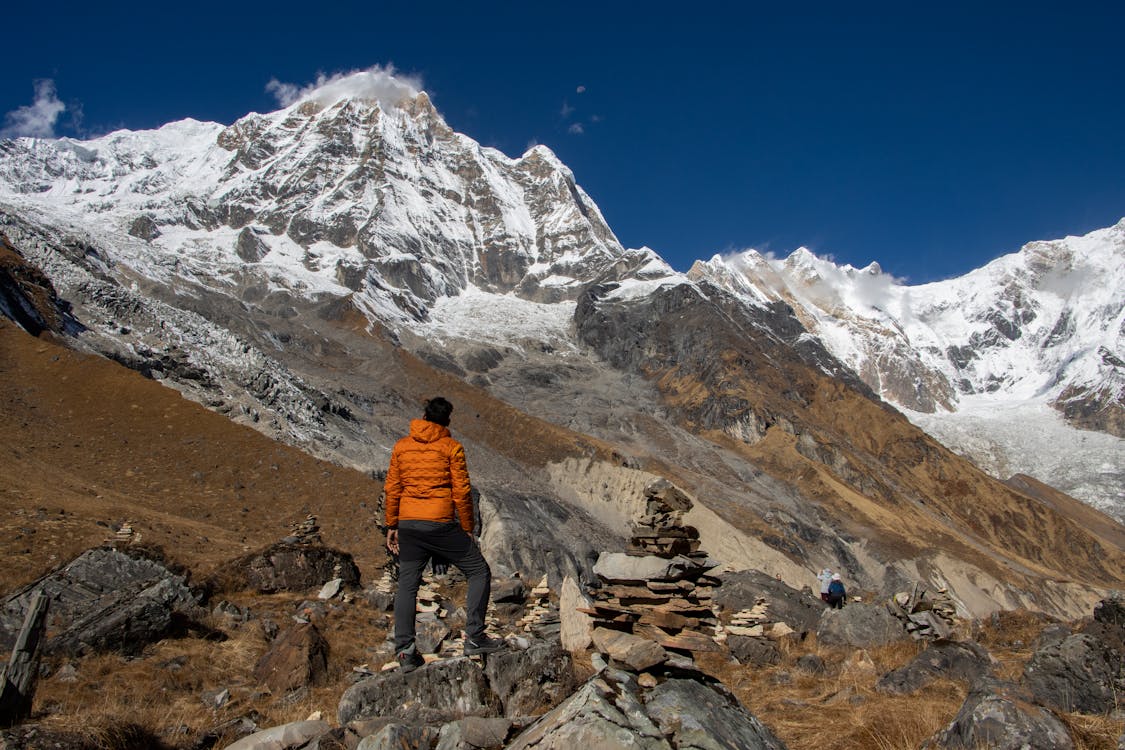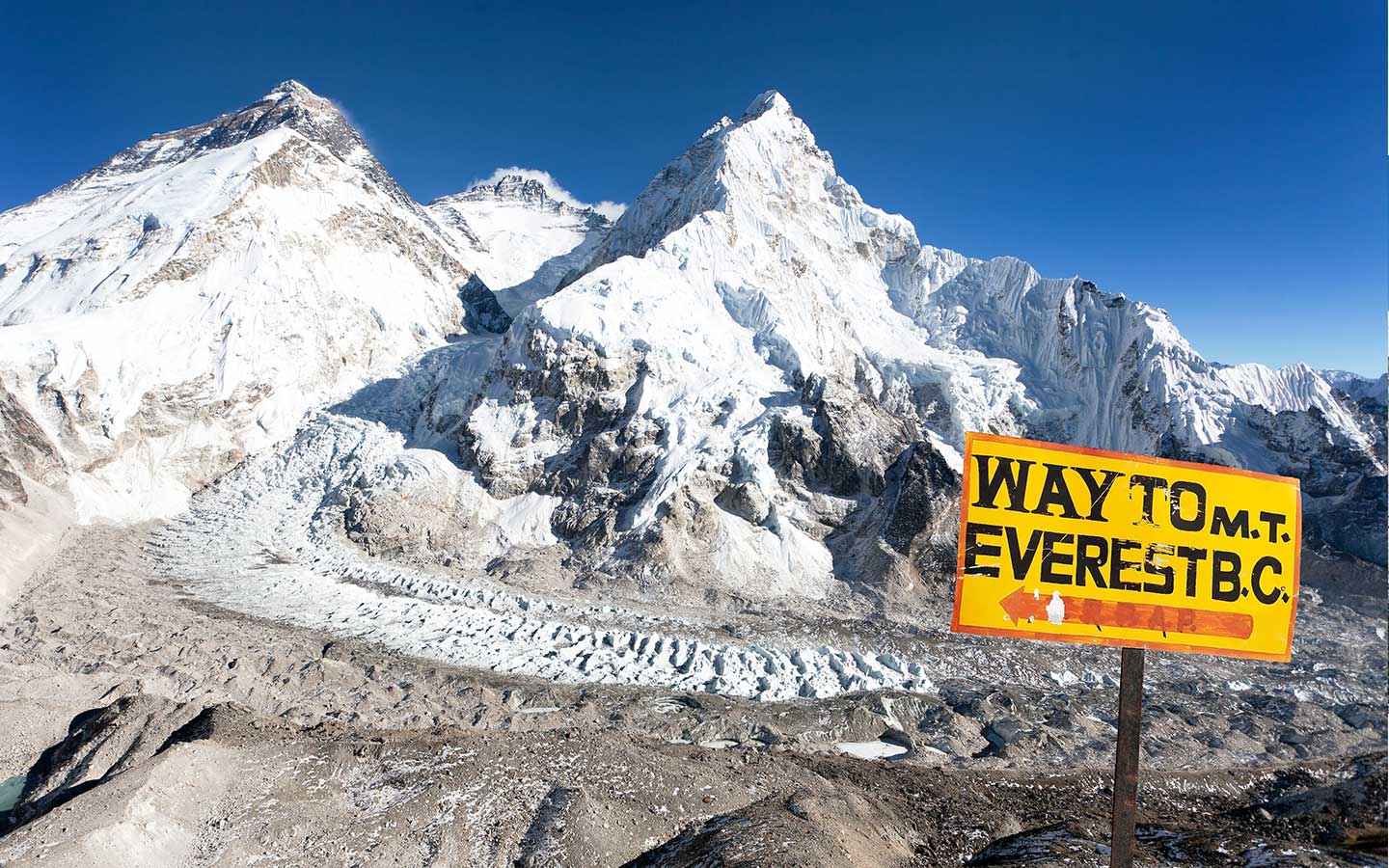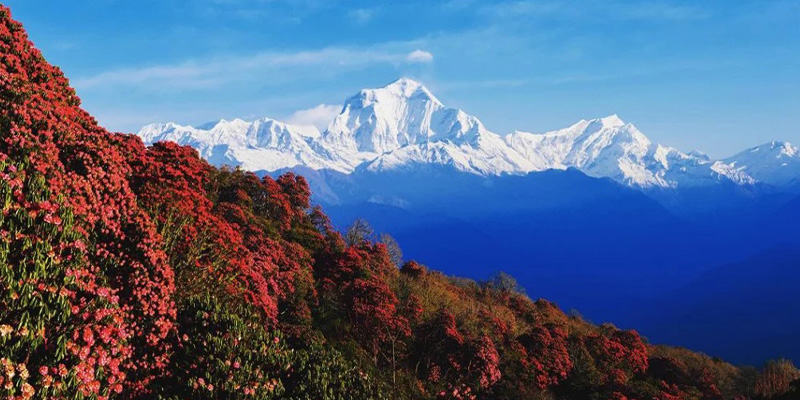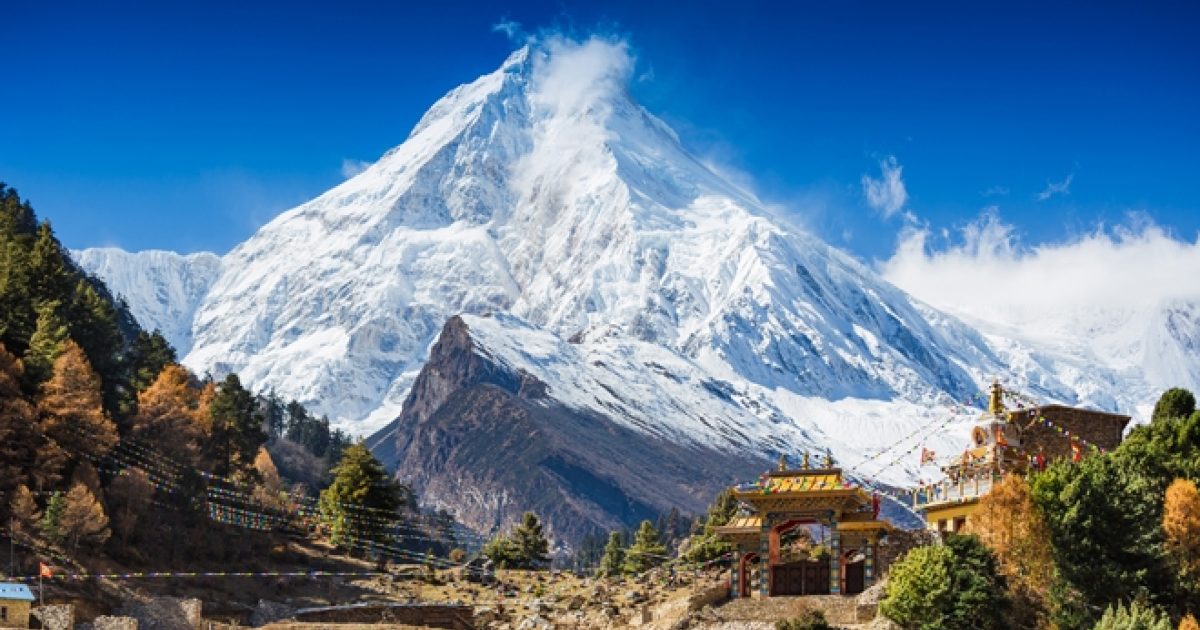Annapurna Circuit Trek | Cost | FAQ | Itinerary| Best Time | Best Offer (2025)
Annapurna Circuit Trek: A Legendary Journey Through the Himalayas
The Annapurna Circuit Trek is one of the most iconic treks in the world, offering trekkers a chance to explore diverse landscapes and witness breathtaking views of Nepal's mighty peaks. From subtropical forests to alpine meadows and high-altitude deserts, the Annapurna Circuit is a captivating adventure for trekkers of all levels.
Do you want personalized information about this trek?
Get in touch for more details and personalized services.
📱 WhatsApp ✉️ Email 📞 Book NowAnnapurna Circuit Trek : Video Guide
A Journey to the Heart of Annapurna Region
The trek begins in the lively city of Kathmandu, leading you through the picturesque villages of the Annapurna region, including Manang and Pisang. The highest point of the Annapurna Circuit Trek is the Thorong La Pass at 5,416 meters, offering panoramic views of the Annapurna range, Dhaulagiri, and Machapuchare. Along the way, you'll experience Nepalese culture, cross suspension bridges, and trek through forests and terraced fields.
Why Choose the Annapurna Circuit Trek?
- Cross the famous Thorong La Pass at 5,416 meters
- Experience the unique culture of the Annapurna region
- Stunning views of Annapurna, Dhaulagiri, and Machapuchare
- Trek through lush forests, terraced fields, and high-altitude deserts
- Visit beautiful villages like Manang and Pisang

The Ultimate Himalayan Adventure
The Annapurna Circuit Trek offers an immersive experience, taking you through remote villages, picturesque landscapes, and cultural hubs. Along the way, you'll trek through rhododendron forests, cross rivers, and enjoy stunning views of the snow-capped peaks. It's a complete package that combines natural beauty, culture, and adventure.
Preparation and Altitude Considerations
The Annapurna Circuit Trek requires a moderate level of physical fitness, as you will be trekking for up to 7-8 hours per day. Since the trek reaches altitudes above 5,000 meters, proper acclimatization is essential to avoid altitude sickness. Our expert guides ensure a gradual ascent, with planned rest days to help you adjust to the altitude and enjoy the trek safely.
Yes, we offer discounts and prices are negotiable!
Want the best deal on your Annapurna Circuit Trek?
📱 WhatsApp ✉️ Email 📞 Book NowWhy Choose Us for Your Annapurna Circuit Trek?
Israeli Tourist always choose Swissa Agency for the advantages below, We offer and serve all international tourists that plan to visit Nepal. We are also registered with Trekking Agencies Association of Nepal
- Over 30 Years of Experience: Serving trekkers from around the world with unmatched expertise in the Annapurna region.
- Customized Itineraries: Whether you choose the long or short trail, we can tailor your trek to suit your pace and preferences.
- Expert Guides: Our guides are highly experienced and well-versed in the local culture, ensuring your safety and enhancing your trekking experience.
- Personalized Services: We understand your unique needs and offer personalized services for every trekker.
- Quality Equipment & Accommodation: Enjoy comfortable lodges and the best gear for a comfortable trekking experience.
Your Journey Through Annapurna Circuit
- Experience panoramic views of the Annapurna range, Dhaulagiri, and Machapuchare.
- Visit charming villages like Manang, Pisang, and Jomsom.
- Acclimatize safely with a gradual ascent.
- Get expert guidance with insightful cultural and environmental knowledge.

You may also interest on
- Annapurna Circuit Trek
- Annapurna Base Camp Trek
- Mardi Himal Trek
- Nar-Phu Valley Trek
- Ghorepani Poon Hill Trek
- Annapurna Circuit via Tilicho Lake
Our Services for Tourists
- Dedicated guides
- Custom itineraries based on your preferences and fitness levels
- Support with visa arrangements, permits, and travel logistics
- Comfortable accommodation with Israeli food options available
- Comprehensive trek packages with no hidden costs
We specialize in tailoring experiences for global tourists.
Want personalized service for your trek?
📱 WhatsApp ✉️ Email 📞 Book NowOverview of Annapurna Circuit Trek
The Annapurna Circuit Trek is today one of the most sought-after trekking routes in the world after its opening to foreign trekkers. The trek is a complete treasure that offers exquisite green valleys, interesting villages, and breathtaking snow-covered views of the towering Himalayas.
The trek starts with a scenic drive from Kathmandu to Dharapani, following the Marshyangdi River, and continues to the Thorong La Pass, the highest altitude of the trek. The trek concludes with a rough ride to Pokhara from Birethanti, where tourists can relax and reminisce about their journey.
Along the trek, the trekkers go through diverse ethnic cultures, Tibetan, Gurung, Magar, to Thakali villages. All the villages are distinct in displaying the life of the people and hence the trek is not merely a tour amidst beautiful scenery but also a cultural experience.
Thorong La Pass: The Ultimate Challenge
The Thorong La Pass at an elevation of 5,416 meters is the high point of the Annapurna Circuit Trek and very likely the most challenging section of the trek. Due to the extreme difficulty of traversing the pass, the trek is usually undertaken in a counter-clockwise route. This facilitates easier acclimatization and also has the benefit of being a gradual ascent.
Reaching the summit of Thorong La is a monumental achievement for many trekkers. From the top, you're treated to panoramic views of the surrounding peaks, including Annapurna, Dhaulagiri, and many others. The descent from the pass leads to Muktinath, a significant pilgrimage site for both Hindus and Buddhists, before continuing to Tatopani, where trekkers can enjoy relaxing in natural hot springs.
Kali Gandaki Gorge: World's Deepest Gorge
Trekking over Thorong La, the trek advances towards the Kali Gandaki Gorge, known as the world's deepest gorge. Located between two giant mountains of Annapurna and Dhaulagiri, the gorge provides stunningly beautiful views together with a thrilling trekking experience. The dazzling view of the gorge is perhaps one of the most quintessential aspects of the Annapurna Circuit Trek, and the raw depth is otherworldly.
Impact of Road Construction
Road construction has affected parts of the Annapurna Circuit Trek in recent years. Even though the roads are less crowded than highways, road walking is unavoidable in the trek. To give the best trekking experience, our new itineraries attempt to minimize road walking and focus on the most authentic and scenic parts of the trek. The adjustments make sure that the charm and cultural significance of the Annapurna region are preserved.
Conclusion
The Annapurna Circuit Trek is a trek over diverse topography, from subtropical rainforest to the dry Tibetan Plateau. The trek offers stunning vistas of mountains, the excitement of crossing the Thorong La Pass, and a chance to trek through the world's deepest gorge, the Kali Gandaki Gorge. The trek remains one of the most majestic and rewarding treks on the planet, offering an everlasting mix of nature, culture, and adventure.
Don't miss the Annapurna Circuit Trek!
Take the adventure of a lifetime with our expert team guiding you every step of the way.
📱 WhatsApp ✉️ Email 📞 Book NowAnnapurna Circuit Trek: Detailed Itinerary
Day 1: Arrive in Kathmandu (1,400m) and transfer to hotel.
Day 2: Preparation day in Kathmandu (1,400 m); optional sightseeing around the valley.
Day 3: Drive from Kathmandu to Syange (1,100m).
Day 4: Trek from Syange to Tal (1,700 m).
Day 5: Trek from Tal to Danakyu (2,300 m).
Day 6: Trek from Danakyu to Chame (2,670 m).
Day 7: Trek from Chame to Pisang (3,300m).
Day 8: Trek from Pisang to Manang (3,540 m).
Day 9: Acclimatization day at Manang (3,540m).
Day 10: Trek from Manang to Yak Kharka (4,018 m).
Day 11: Trek from Yak Kharka to Thorung Phedi (4,450 m).
Day 12: Trek from Thorung Phedi to Muktinath (3,760 m) via Thorung La Pass (5,416 m) and drive to Tatopani (1,190m) for natural Hotspring OR drive to Jomsom (2,720m) for flight.
Day 13: Drive from Tatopani to Pokhara or fly to Pokhara from Jomsom (822 m).
Day 14: Drive or fly from Pokhara to Kathmandu (1,400 m).
Day 15: Free day in Kathmandu (1,400 m) and farewell program by Red Swissa Family.
Day 16: Transfer to Tribhuvan International Airport for international departure.
Do you need a personalized itinerary.
Or a Cheap Deal? Contact us Now
📱 WhatsApp ✉️ Email 📞 Book Now



Comments